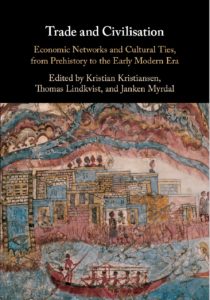(Calgary, Alberta) The Canadian Federation of Taxpayers (CTF) has issued a new report on global carbon taxes, showing most countries have frozen or rolled back carbon taxes, but US climate scientist James Hansen is pushing for a $210/t carbon tax in Canada by 2030. Hansen’s argument is that the tax has to be high enough that people will buy into the carbon dividend (rebate to lower income households) – effectively making Canadians into carbon serfs and a carbon welfare society. CTF reports: “About half of the emissions covered by carbon taxes are priced below US$10/tCO2e, according to the World Bank’s most recent State and Trends of Carbon Pricing (2019).” Canada has more than 600 greenhouse gas reduction/incentive measures on the books, which have never been audited for effectiveness.
This begs the question of “what is a climate scientist doing dabbling in Canada’s domestic affairs on carbon taxes, pushing a carbon tax that is 21 times that of the world,” says Friends of Science Society.
As revealed by Lawrence Solomon in the 2009 article “Enron’s Other Secret” “James Hansen, the scientist who more than any other is responsible for bringing the possibility of climate-change catastrophe to the public, was among the scientists Enron commissioned.”

Enron had profited from cap and trade, but the company collapsed into a pile of ashes in 2001 due to off-book accounting and financial fraud.
None-the-less, a group of green billionaires took up the global cap-and-trade challenge, apparently working from the Enron carbon/cap-and-trade scheme model, as reported by Nisbet in 2018. Like Enron, they have funded local and global environmental groups to agitate for policies in countries around the world, favorable to their proposed global cap and trade plan. The plans require a price on carbon with the intention of funding their trillions in vested interests in renewables. Many of these groups are associated with the Tar Sands Campaign that has falsely created “Fear and Loathing” of the Alberta oil sands and driven a downturn in the economy.
Michael Moore’s recent movie “Planet of the Humans” revealed how this green crony capitalism is destroying the planet for no climate benefit.
Canadians now face an onslaught of Carbonbaggers – the number one being Mark Carney, now UN Climate Czar and former Bank of England and Bank of Canada governor. Carney threatens firms with bankruptcy if they do not comply with his demands to report on climate risk and abandon fossil fuel investments.
As Robert Lyman’s new report shows: “Broken Promises: Why Renewables Offer No Resilient Recovery”, Carney is misleading the public and investors on global oil consumption and demand.
Both oil production and consumption have risen by more than one million barrels per day per year since 2012.
• Oil demand is at its highest level in history.
• In absolute terms, oil demand is growing twice as fast as renewables.
• Global oil reserves have risen throughout the period, from 1141 billion barrels in 1998 to 1730 billion barrels in 2018; peak oil is nowhere in sight. That is a 10 million barrel per day increase over the nine years.
• In absolute terms, natural gas is experiencing the fastest rate of growth of all energy sources, almost three times as fast as renewables.
• Natural gas demand is at its highest level in history.
Friends of Science Society says carbon dioxide from human industry is a nominal influence on climate change, known since the 2013 IPCC AR5 report. The fact that financial ‘experts’ like Mark Carney are still pushing the climate-carbon dioxide catastrophe theme constitutes a violation of securities regulations related to ‘material change’. Furthermore, as Roger Pielke, Jr. reports, climate catastrophe scenarios are the product of green billionaires pushing the ‘climate porn’ scenario, which is far from reality or business-as-usual.
“Green” groups in Canada are demanding that the new Canadian Infrastructure Bank be used to finance their green crony capitalist schemes.
Friends of Science Society issued a request for ethics investigation into the development of the Canadian Infrastructure Bank in Nov. 2017. The Conflict of Interest concerns expressed there are still valid in their opinion.
Evidence from Norway to Zimbabwe shows that carbon taxes have no discernible impact on emissions reduction and are simply oppressive to taxpayers and industry. Friends of Science Society says Carbonbaggers should not be using carbon taxes as a means of creating a Canadian climate welfare state, especially not driven by foreign influences, street theatre, and deception.
See “The Roots of Global Warming”.
About
Friends of Science Society is an independent group of earth, atmospheric and solar scientists, engineers, and citizens who are celebrating its 17th year of offering climate science insights. After a thorough review of a broad spectrum of literature on climate change, Friends of Science Society has concluded that the sun is the main driver of climate change, not carbon dioxide (CO2).
Featured image by @HeatherLibby






 For the Silo,
For the Silo, 
 Trade networks, however, were not durable. The contributors discuss the establishment and decline of great trading network systems, and how they related to the expansion of civilization, and to different forms of social and economic exploitation. Case studies focus on local conditions as well as global networks until sixteenth century when the whole globe was finally connected by trade.
Trade networks, however, were not durable. The contributors discuss the establishment and decline of great trading network systems, and how they related to the expansion of civilization, and to different forms of social and economic exploitation. Case studies focus on local conditions as well as global networks until sixteenth century when the whole globe was finally connected by trade.
 The “good ole boys” network in the RV industry conspired to keep me out. But I learned to operate in a man’s world, carving out my path to success. Like other women, I have rewritten the rules and redefined the business climate, proving that any woman can succeed in any industry, regardless of gender boundaries.
The “good ole boys” network in the RV industry conspired to keep me out. But I learned to operate in a man’s world, carving out my path to success. Like other women, I have rewritten the rules and redefined the business climate, proving that any woman can succeed in any industry, regardless of gender boundaries.